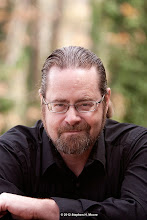I’m a Type A, technically-minded person…that’s why I was a laboratorian! And working in lab you’re trained to follow point A to point Z in the correct order.
And knitting is like that. You follow a pattern, you piece it together in a certain way. So I should be good at knitting? Except…we’re not talking about the yarn kind of knitting today. We’re talking about knitting scenes of a book together.
So it’s really not surprising that I write from beginning to end; no detours, no skipping ahead, no passing go to collect $200 dollars. It’s how my brain is wired. And knowing how your own brain works is key.
Some writers I know need the candy bar method Vivien mentioned yesterday. They have that one perfect scene complete in their head and once they put it to paper, the creative floodgates open and they can knit their story together. Does that way of writing work for you?
If so, huzzah! Go forth and write! If it doesn’t…maybe your brain’s more analytical and the following might help.
Each book I’ve written, and the manuscripts I’ve outlined and started, all began with that one perfect scene for me. Usually the scene comes from one of my dreams, like it’s been handed to me in a mini-movie format. But I never try to write it as a chapter right away. Because…that would be out of order.
Instead, I take my perfect scene, or you take your instigating idea, and sketch out the scene in outline format so I don’t forget the details.
*Note: I always know exactly where my scene fits in my story: beginning, end, climactic moment etc. If you don’t know this yet, take some time to brainstorm and ask yourself: what happens after, what needs to happen before, what changes for your MC (main character) in this scene?
Now that you know exactly where your perfect scene/idea sits in the timeline, it’s synopsis time!
*Second Note: Lots of writers do not use a detailed outline/synopsis to write. YMMV This step is included here because my technical brain follows a well-laid plan easiest.
When writing my synopsis I build from or around my originating scene and the rest of the world and plot details flow from there. I like to go for super detailed here…remember, lab girl here? The more detail and direction I put down in this stage the better off I am in the drafting stage and THE LESS I HAVE TO TRY KNIT IN LATER!
All that because I suck at knitting in scenes. Why? I say it’s because when I plot out my books I do a lot of detail on the frontside and when I’ve needed to weave in new scenes that change things in the timeline…it gets messy.
Sort of like Ullr’s rope bone that started out all tightly woven together (pictured at top of post). The rope was smooth and strong, but once my pup started tugging here and there it began to unravel in spots. That's what I feel like happens to my books when I mess with them and try to knit in scenes.
So I do my best to not have to, or at least not have to knit in major scenes that shift the trajectory of the story. That’s like…like, your chemistry analyzer going down before you even get your day’s samples loaded!
I’ll keep attempting to avoid that nightmare. How ‘bout you? Do you avoid knitting or are you a master weaver?



























